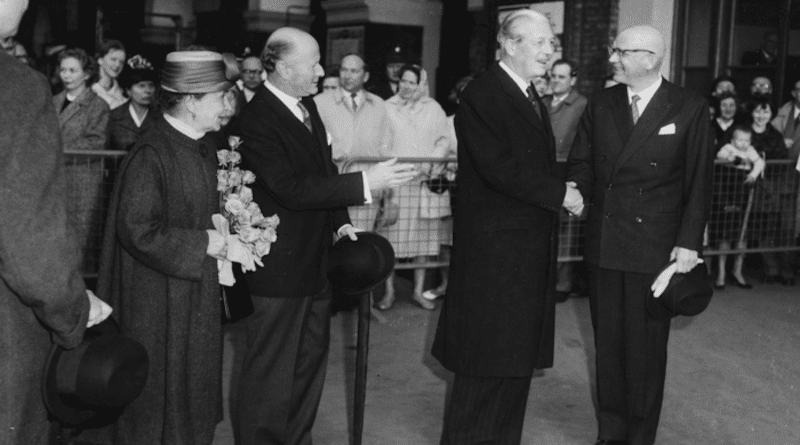British Intelligence Influenced Finland’s President Kekkonen Through His English Teacher
Western powers took advantage of the secret communication with the Finnish President Urho Kekkonen and tried to influence his thoughts during the Cold War.
New research reveals that Finnish President Urho Kekkonen had a closer relationship with Western Intelligence than was previously known. This is evident from Mikko Virta’s doctoral research. It examines relations with the West and especially with the Western intelligence services during the Cold War. The investigation also reveals a secret information operation, called Operation Thread, targeted at President Kekkonen by the British. The operation was not previously known.
Background of the era:
Finland’s geopolitical situation was delicate after the Second World war right up to the 1960s. Finland needed to balance in order not loose its independence with an imperialist superpower Russia as its neighbour.
The 1958 Night Frost (The Night Frost Crisis) was a political crisis that occurred in Soviet–Finnish relations in the autumn of 1958) destroyed the trust of the leading Western powers, Britain and the United States, in Kekkonen. In the eyes of the West, Kekkonen looked like a weak man who was too much under the influence of Soviet leader Nikita Khrushchev and believed that the Soviet Union was winning the Cold War. The situation looked so bad that the Western powers launched an extensive influence operation in which they tried to turn Kekkonen to the West.
The President was kept in close contact through ambassadors, he was invited to western capitals and high-ranking western guests were brought to Finland.
Results from the research:
“Western powers began to supply Kekkonen with confidential information through secret channels,” Mikko Virta explains.
Based on the research, the efforts of the Western powers seem to have succeeded to some extent, as Kekkonen himself began to make openings in the direction of the West.
Kekkonen was always thinking two steps ahead and he was aware of the possibility of Soviet moles in the Foreign Office and Secret Intelligence Service.
Virta’s research shows that the role of intelligence services in Kekkonen’s relations with the West was in the forefront. In his youth, Kekkonen had worked for years in the Finnish Security Police (Fi. Etsivä keskuspoliisi, EK). He adopted the practices of the secret police so well that he used them throughout his long political career.
Operation Thread tried to influence leaders
The influence operation was connected to Operation Thread of the Information Research Department of the British Foreign Office. Targeted state leaders received personally tailored material from the British Foreign Office’s propaganda department. The goal was to build such a deep relationship of trust with the target persons that their thinking could be influenced if necessary. Kekkonen was one of the most important targets of this operation.
“Nothing was previously known about this operation. I half-accidentally found documents related to it in London, which have only been released for use by researchers a few years ago,” says Mikko Virta, who has researched the topic for his Doctoral Thesis.
Kekkonen’s English teacher was a British agent
“At the beginning of 1961, Kekkonen started intensively studying English, which he barely knew before. Briton John Haycraft came to Finland as Kekkonen’s language teacher, who moved to live with the presidential couple into their residence, says Virta.
“At the same time, Haycraft acted in an intelligence role and reported his detailed findings about the president’s life to London,” says Virta.
In 1961, Kekkonen visited Britain and personally met the UK leaders. The visits and close contacts improved Kekkonen’s relations with the West.
Then the Note Crisis between Finland and the Soviet Union, and also the KGB defector Anatoli Golitsyn’s claims about Kekkonen as an influence agent of the Soviet Union, tore trust to pieces again.
Relations with intelligence services
Already in the 1940s, Urho Kekkonen had made connections with the British and American intelligence services.
Old contacts were used when Western powers needed information about Finland directly from the highest level. As an old intelligence officer, Kekkonen himself was a player, making use of secret connections – both eastward and westward.
The most important contact seems to have been the British intelligence officer Rex Bosley, with whom contact was maintained from the 1940s until the 70s.
Bosley was also Kekkonen’s good friend, Virta concludes.

